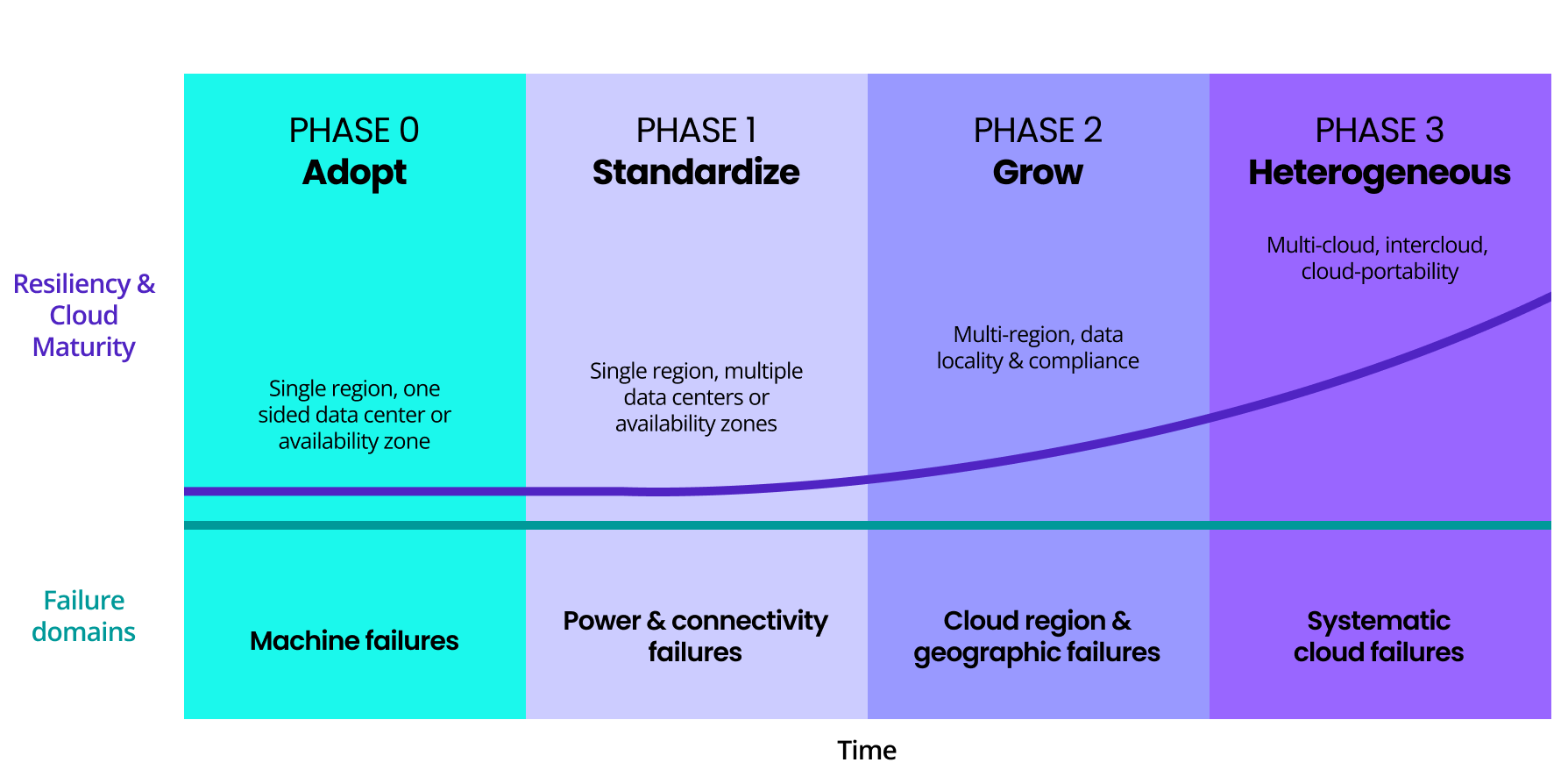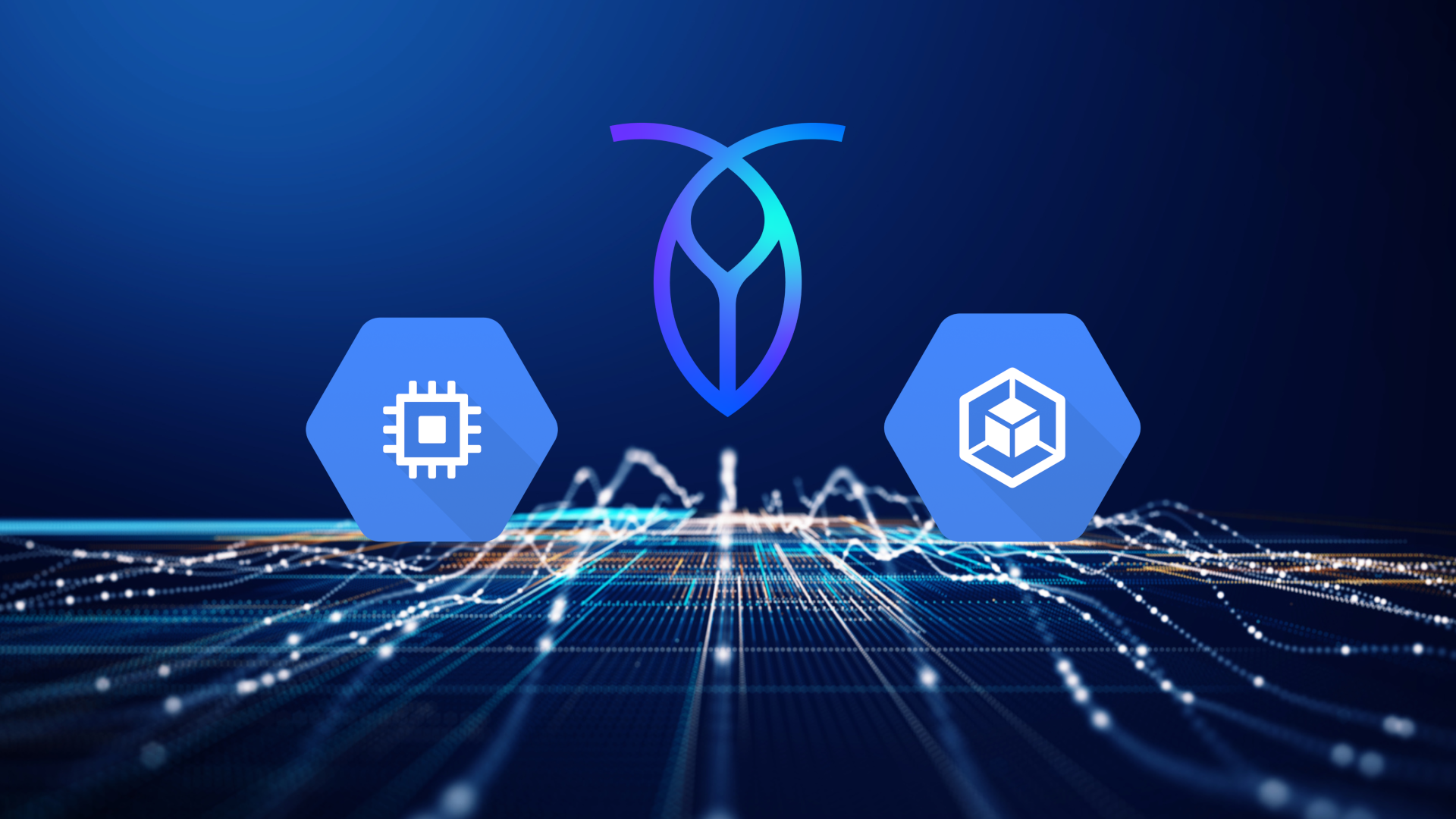Just a few short months ago, we all experienced the devastation of a massive IT outage: the Crowdstrike incident. This, along with other incidents in recent years, have shown us all how critical technical infrastructure is to our everyday lives, and why we need resilient systems that can survive human error, spikes in traffic, and much more.
During the 2023 Gartner IT Infrastructure, Operations & Cloud Strategies Conference, Distinguished VP Analyst, Dennis Smith presented on “The Future of Cloud in 2028: From Technology to Business Necessity.” In his presentation, he posits that by 2028, a cloud strategy will be critical to business success, with about 70% of workloads running in a cloud environment, up from 25% in 2023.
But how do large enterprises get to the cloud? Data migrations can be costly and risky, and even if the migration is worth it – how can companies ensure that they will get a solid ROI? How can they ensure that their new technology stack will not become defunct in a few years as they continue to improve their products and services?
Beyond the need for 24/7 availability, businesses must safeguard their customers' data and adhere to strict regulatory compliance. It’s also important that they deliver data consistency and low latency access so customers always receive accurate information and don’t experience prolonged wait times.
With all this in mind, there is a reason that many companies have chosen to remain on their on-prem systems: high security, reliability, and consistency. However, moving to the cloud no longer means sacrificing these benefits, and the cloud offers economies of scale so that infrastructure can accelerate business growth rather than hinder it.
To showcase how the cloud has worked for companies across the globe and across industries, we’re kicking off a new blog series: Cloud Journeys with Distributed SQL. In this first post we will share some stories of how enterprises have moved from on-premise legacy database solutions to hybrid or single region cloud deployments by leveraging our distributed SQL database, CockroachDB.
Storm vs. data centers: The catalyst for an investment bank
A few years ago, a major American multinational investment bank’s online portal went offline for hundreds of thousands of customers. The cause was a winter storm that took down two of their US data centers. This incident revealed their mainframe's inability to survive regional outages, which can result in revenue loss, regulatory fines, and heavy operational costs.
To address this incident and to prevent it from ever happening again, the bank initiated a program to ensure all tier 1 apps and services always remained available.
Coincidentally, the bank was running a POC with CockroachDB, and it remained unaffected during the US outage, proving its reliability. As a result, the bank adopted CockroachDB which would replace their legacy Db2 mainframe for workloads that required the utmost high availability. CockroachDB is easier to scale than mainframes, and offers a cloud-native infrastructure so that they can quickly adapt to market changes and customer demands. It also reduces the amount you need to spend on hardware and specialized personnel required to maintain mainframes.
After adopting CockroachDB, the company has increased resilience, achieving an RPO/RTO of 0. Looking ahead, the company plans to move more services to CockroachDB in 2024 and 2025, aiming to eventually expand to the public cloud.
If you want to learn more about building resilient banking systems, check out the below talk from Thomas Boltze, Head of Cloud Architecture at PagoNxt (a Santander company):
A top US bank could not risk legacy databases anymore
Another top US bank has taken the next step by initiating a major move of its applications off legacy technologies like Oracle and Db2. The bank's infrastructure built an internal CockroachDB-as-a-Service offering which supports hundreds of applications from metadata management systems to financial ledgers. Additionally, CockroachDB's resilience, consistent transactions, and compatibility with modern technologies like Kubernetes has made it an integral part of their technology stack. The bank wanted a flexible solution so they could:
Remain Payment Card Industry Data Security Standard (PCI DSS) compliant
Deploy on-prem and sometimes hybrid solutions
Deploy across multiple regions and across multiple clouds, like AWS, GCP, and Microsoft Azure
After all, a forward-thinking business is interested not only in solving today’s problems, but also in anticipating future growth and scale to truly reap the benefits of their infrastructure investment. Since introducing CockroachDB to their ecosystem, the bank has leveraged our database for several use cases, including CockroachDB Cloud for their banking-as-a-service application, which will facilitate transactions like payments, card issuing, and servicing. CockroachDB’s enterprise security features and flexible options, including hybrid, multi-region, and multi-cloud deployments, were a key factor in selecting our database solution.
Managing data sovereignty restrictions and business growth
A global leader in property information and analytics, embarked on a transformative journey to modernize their infrastructure by migrating from on-prem data centers to a hybrid cloud environment.
They faced the challenge of shutting down numerous on-prem data centers and moving to Google Cloud Platform (GCP) while also transitioning several applications from Oracle to a cloud-native database.
CockroachDB's cloud-native architecture, strong data consistency, and geo-partitioning capabilities made it the ideal choice. By leveraging CockroachDB, the company was able to meet data sovereignty requirements, scale effortlessly, and deploy across multiple regions without latency issues. This strategic move not only enhanced their operational efficiency but also positioned them to replace a large number of disparate Oracle databases in the future.
A retailer’s search for a global, centralized inventory management system
A large omnichannel retailer embarked on a journey to modernize their inventory management system by moving from a mix of databases (Oracle and PostgreSQL) to a centralized cloud-based solution using CockroachDB.
As modern retail and eCommerce businesses know, managing inventory across your apps, websites, and physical locations can be challenging. If a customer orders something online, you need to be sure that their item is in stock and available – data consistency has become table stakes. In addition, these companies need to handle massive spikes in transaction volumes around holiday times, peak seasons, or even unpredictable viral trends. Cloud solutions can simplify the way businesses scale up and down based on demand – something that on-prem solutions cannot offer.
For this particular retailer, they wanted a solution that could provide a global view of all their inventory, reduce operational complexity, and ensure application availability across multiple regions. Currently, they have deployed CockroachDB in a single AWS region in Europe. Since adopting CockroachDB, the company has reported improved operational efficiency and sees the potential for future growth and additional use cases such as loyalty and payments.
Preparing for any stage of your cloud journey
The above showcases how different businesses were able to utilize the cloud to solve critical vulnerabilities that come with legacy databases. Whether you are just starting to plan your cloud strategy or if you are already utilizing hybrid, single region, or multi-region deployments, a forward-minded cloud strategy for your business is something to consider focusing on.
With outages caused by everything from weather to human error or faulty software updates, the cloud can offer necessary digital redundancy, even if you are not ready to fully move from on-prem deployments.
If you want to learn more about how the CockroachDB Cloud platform can power your entire application lifecycle, check out the video below and get started for free on our website.








